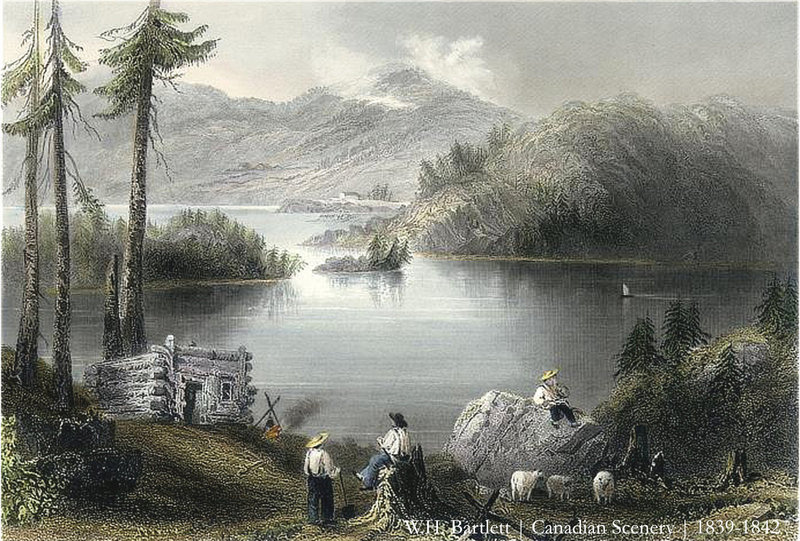Vale Perkins
En 1789, Nicholas Austin un riche Quaker de Dover au New Hampshire, demande une concession sur le bord du lac "Mumphry Magog" pour lui et 74 associés. Peu après, sans autorisation, il engage des hommes et s'installe à Vale Perkins tout près du lieu où l’on dit que les Autochtones amorçaient leur portage vers la rivière Missisquoi en suivant un sentier entre Vale Perkins et Mansonville.
II construisit une maison en bois rond près du site du quai de Vale Perkins et défricha plus de 1300 pieds de terrain à partir du lac. Il alla même jusqu’à débarrasser la rivière Missisquoi des arbres tombés pour la rendre navigable jusqu'au Vermont dépensant plus de six cents dollars pour ces travaux, une somme énorme pour l’époque (Epps, 1992).
Mal lui en prit car cette occupation n'était pas autorisée et le gouverneur Lord Dorchester lui ordonna de quitter les lieux. En 1792 Austin s'installa dans la baie Austin, canton de Bolton et Samuel Perkins s'installa à sa place l’année suivante.
In 1780, Nicholas Austin, a rich Quaker from Dover, New Hampshire, asked for a land grant on the shores of Lake "Mumphry Magog" for himself and his 74 associates. Shortly afterwards, without authorization, he hired men and settled in Vale Perkins near the site of the Landing where Natives began their portage towards the Missisquoi River (following a trail between Vale Perkins and Mansonville).
He built a log cabin , cleared 1300 feet of land from the lake, and went as far as freeing the Missisquoi River of fallen trees to make it navigable down to Vermont. He spent over 600 dollars in this undertaking (Epps, 1992), a very large sum in those days. For example, Austin was given £ 20 (about $50.00) to open a road between the US border and Bolton in 1792 (Shufelt, 1965).
To his dismay, Austin was ordered to leave by Lord Dorchester because his settlement had not been authorized. In 1792 he resettled in Austin Bay, Bolton Township, and Samuel Perkins took over the abandoned site the following year.
